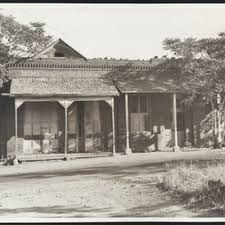I'm back to cutting up fabric and stitching it back together, but a break was in order. The weather couldn't be more perfect. Too bad it's not going to last. 95 is on the horizon, so I decided I better get out while it was still cool.
You've heard of Chinese Camp? I think just about everywhere I've gone in California, there are places called Chinese Camp, simply because of the people that lived there. This was gold country, and between 1849 and 1882, thousands of Chinese immigrants came to the Sierra foothills to look for the rocks that would make them rich, or at least to find a job that would pay them. That money was sent back to China to feed their families.
They did not come by train because it wasn't built until 1897. Most likely they rode in wagons owned by local mining companies, to become basically slave labor. As the excavations rose higher in the mountains, the Chinese were taken from Camp Salvado to Chinee Camp. Although it is now called Chinese Camp, it has always been known to me as Chinee Camp.
It's not easy to find, which is probably one reason it's still around. There are a few narrow back roads if you know where to go, that will take you to this hidden gem.
On April 18, 1854, the post office was established in the general store. At the time, there were about 5,000 people living here. Along with the Chinese workers came their "protective associations", called Chinese Consolidated Benevolent Associations. This picture is of the Officers of those Associations in 1890, most of which were ruled out of San Francisco. There were six associations at the time, and four of them had agents in this Camp.
Originally they were set up to help the sick and starving Chinese immigrants and to facilitate the dead being sent back to China for burial, which was most important to them. Separate from the six were secret societies which became the "Fighting Tongs", originally set up to oppose the Manchu dynasty. Pretty soon they were fighting everyone for their piece of opium, Chinese labor and gold. The biggest money was made in "protection" or "tithing". If you didn't pay, you died.
In 1853, James Kerrick came here with nine covered wagons. He built a restaurant, saloon, boarding house and stable a few miles from town, for freighters going to and from the mines. It is here in September of 1856 that the first Tong war began between Sam Yap and Yan Woo. Over 2,000 Chinese were involved. The gang wars continued until the 1920's. Sadly, it all burned down in 1949. Only this monument remains today.
Right across the road were the corrals, which still exist. Just goes to show what good rock masons they were. The Chinese were also used to built rock fences, which still crisscross the countryside today.
You really wouldn't even know there was a town here if you weren't familiar with the territory. Nothing is kept up very well, and even the occupied buildings look abandoned.
Back in the day, it was pretty fancy for a gold mining town. By 1890 the gold was pretty much gone, but the town continued on ... barely.
We ran some cattle up in this area, or I probably never would have found this almost ghost town. It's sad that no one keeps any of the buildings up.
The Post Office is still going strong, kinda sorta. The building is vacant, but they have rented a space in the neighbor's field to stay in operation.
This is the Saint Frances Xavier Roman Catholic Church, established in 1855. That makes it the oldest church in the country. It was renovated at one time, not long after I was born, but has been left in disrepair ever since. Sadly, that's a big chain holding it up. Owned by the Archdiocese of Stockton California, it's too bad they don't do something to maintain the building.
The most impressive building you will see is the school. It was designed and built in 1970 in the traditional pagoda style. The original school near the church, burned down in 2006. What a great way to celebrate the heritage of Chinee Camp.
You just never know what you will find in them thar hills, especially in GOLD country.









Oh my goodness what a wonderful history lesson I learned today.
ReplyDeleteNancy you're the best!
Frances:)
It's surprising how much history there is around this little town.
DeleteVery interesting piece of history, thanks for sharing!
ReplyDeleteI'm kind of surprised it's still here. Hopefully the little town survives.
DeleteI have seen the 'rock walls' that adorn areas of the foothills, and I knew the Chinese built most of them. Huge factor in the building of the railroad which crossed the Sierra's too.
ReplyDeleteI just can't imagine getting on a ship in terrible conditions and getting here in the first place ... then working so hard for so little money. They were strong people.
DeleteThanks for the interesting story Nancy...appreciate you sharing the history of that area.
ReplyDeleteI'm sure there were Chinese camps all over the Sierras, but this one actually became a town.
DeleteIt is always so sad to see historic buildings in such deserted state but i guess the $ and desire to keep them active just isn't enough for them all.
ReplyDeleteThat's the problem ... it's expensive to restore those buildings. Might make a nice quilt store though!! LOL
DeleteThanks for this tour. Well done.
ReplyDeleteThank you ... it's a fun place to explore.
DeleteAs always, a very interesting story from the past!
ReplyDeleteFunny how I love history now but hated it when I was in school! LOL
DeleteVery interesting. Thanks for the history tour. St. Francis Xavier is my patron saint.
ReplyDelete